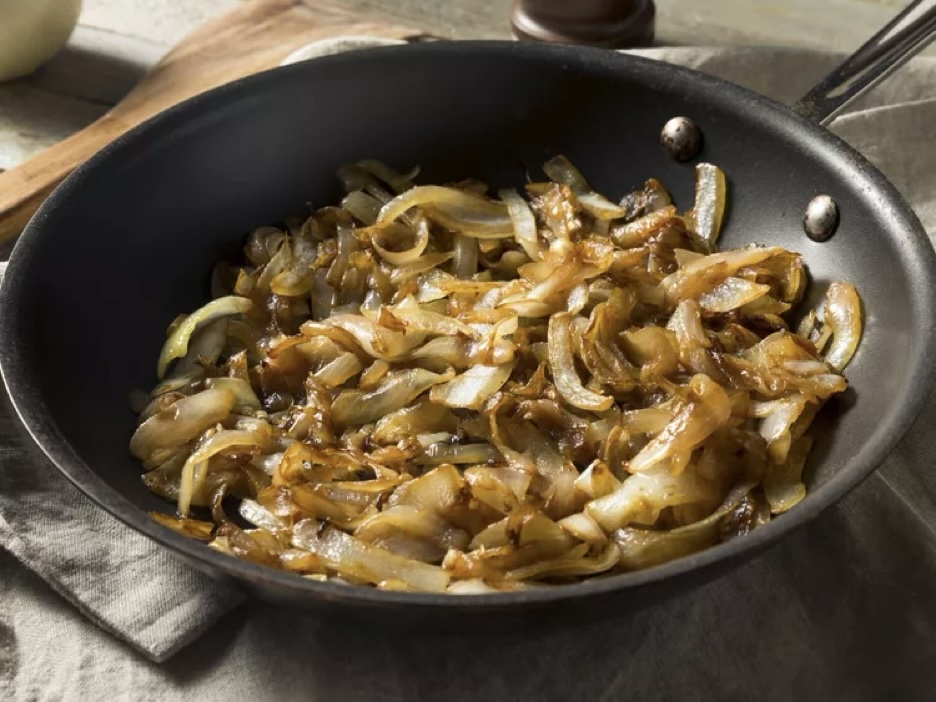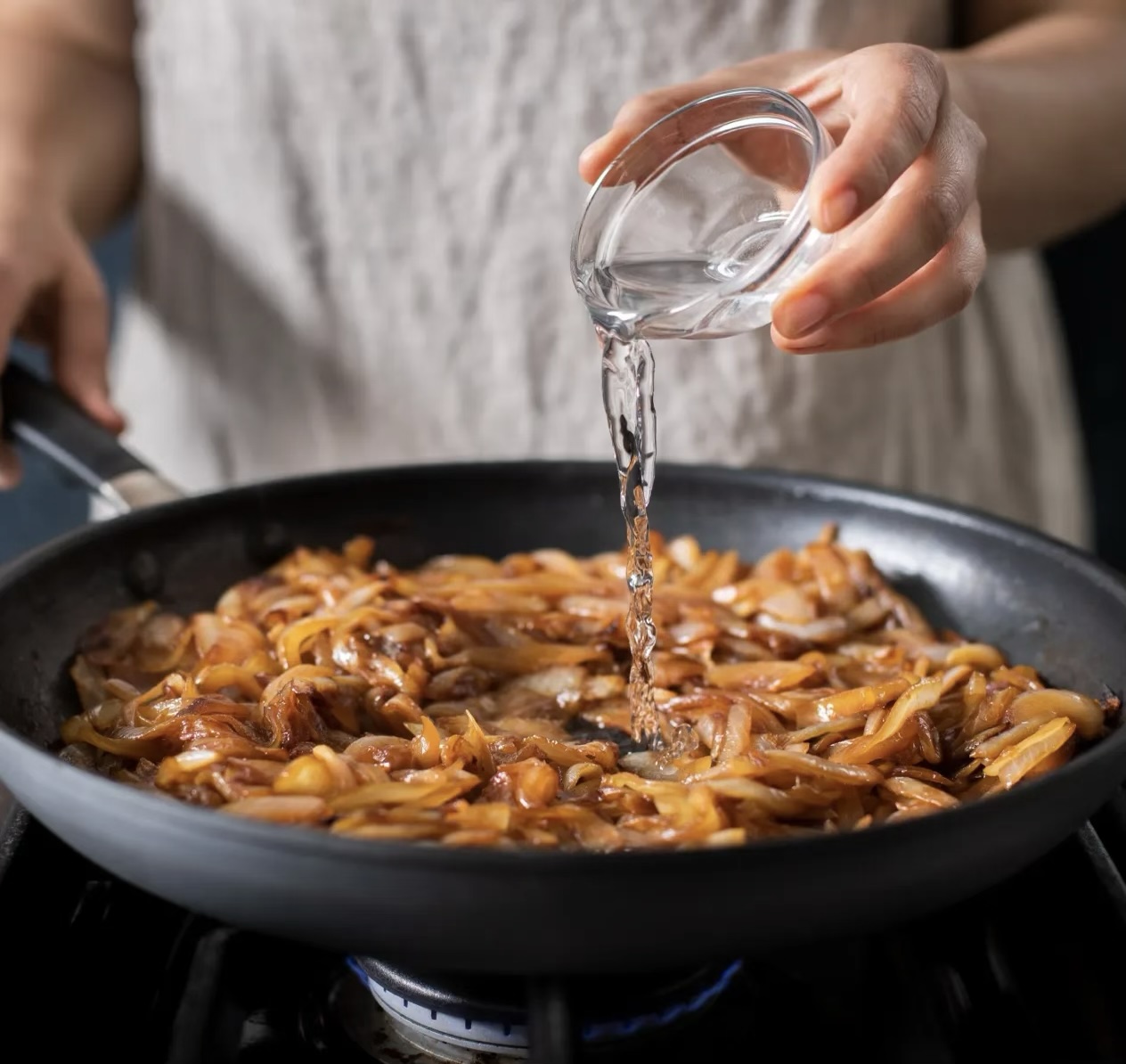A Professional Tip that Will Truly Change the Way You Cook
One simple ingredient can take a dish from ho-hum to HOLY COW!—caramelized onions. Their sweet and savory flavor makes them a game-changing addition to all sorts of foods. For instance, here are some cooking uses for caramelized onions:

- on burgers, patty melts, cheesesteaks, or sandwiches.
- as a topping for pizza, flatbreads, or tartlets.
- into a classic French onion dip for a savory and sweet appetizer.
- into hummus for a unique and flavorful dip.
- in salads for a touch of sweetness and depth of flavor.
- into soups, stews, or chili for a rich and savory flavor
- in pasta dishes like mac and cheese, pesto pasta, or roasted vegetable pasta.
- as a topping for meats like chicken, steak, or pork, or in a glaze for a sweet-and-tangy flavor.
- with potatoes, sweet potatoes, or other vegetables for a flavorful side dish.
- into quiche or frittata batter for a savory and sweet breakfast or brunch dish.
- into omelets for a quick and easy meal.
- in scalloped potatoes for a delicious and comforting side dish.
- in meatloaf for a sweeter and more flavorful twist
- into chutney or jam for a unique condiment
- in focaccia bread for a delicious and flavorful loaf
- atop a baked round of brie to be served with crackers or baguette
- atop English muffins and other favorite pizza toppings to make quick mini pizzas
But done the traditional way, caramelizing onions is a painstaking process that can take well over an hour, even if you use a hands-off method like the slow cooker.

Recipe developer and food writer, Courtney Kassel, explains why: “Onions (like all vegetables), have lots of naturally occurring sugars, and cooking over heat draws them out, along with amino acids (which aids the caramelizing). But it’s a tricky process.”
Tricky for sure. Cook them too little, and they won't have enough time to develop that sweetness. Cook them too hot; and their sugars can burn. However, Courtney reveals one simple step you can take that will speed up the process and make it more fool-proof, too.
First, add butter or oil, a little water (about ½ cup) and onions to a sauté pan (preferably nonstick) and cook on low heat until they start to cook down, stirring constantly. Vegetable, chicken, or beef broth can be substituted for water for extra flavor. Once the liquid is boiling or close to it, put a lid on the pan so the onions can steam and wilt. Check on them every couple minutes; if at any point the pan look dry, add a little more water (or broth or a splash of wine) to deglaze the pan, and keep stirring.

The liquid at the bottom infuses with all the sugary onion juices, distributing those sugars evenly through the onions. Once the onions are softened, keep stirring until you reach your desired browning.
Following this one step of adding liquid at the start of the cooking process drastically reduces total caramelizing time. This is one of those professional tips that will truly change the way you cook. Even if you don't want to take your onions to a stage of deep caramelization, it will cut down the prep time for any onion and make your weeknight meal-prep so much faster and easier.
 Alice Osborne
Alice Osborne
Weekly Newsletter Contributor since 2006
Email the author! alice@dvo.com
Sources:
- www.allrecipes.com
- www.depositphotos.com
- www.americastestkitchen.com
